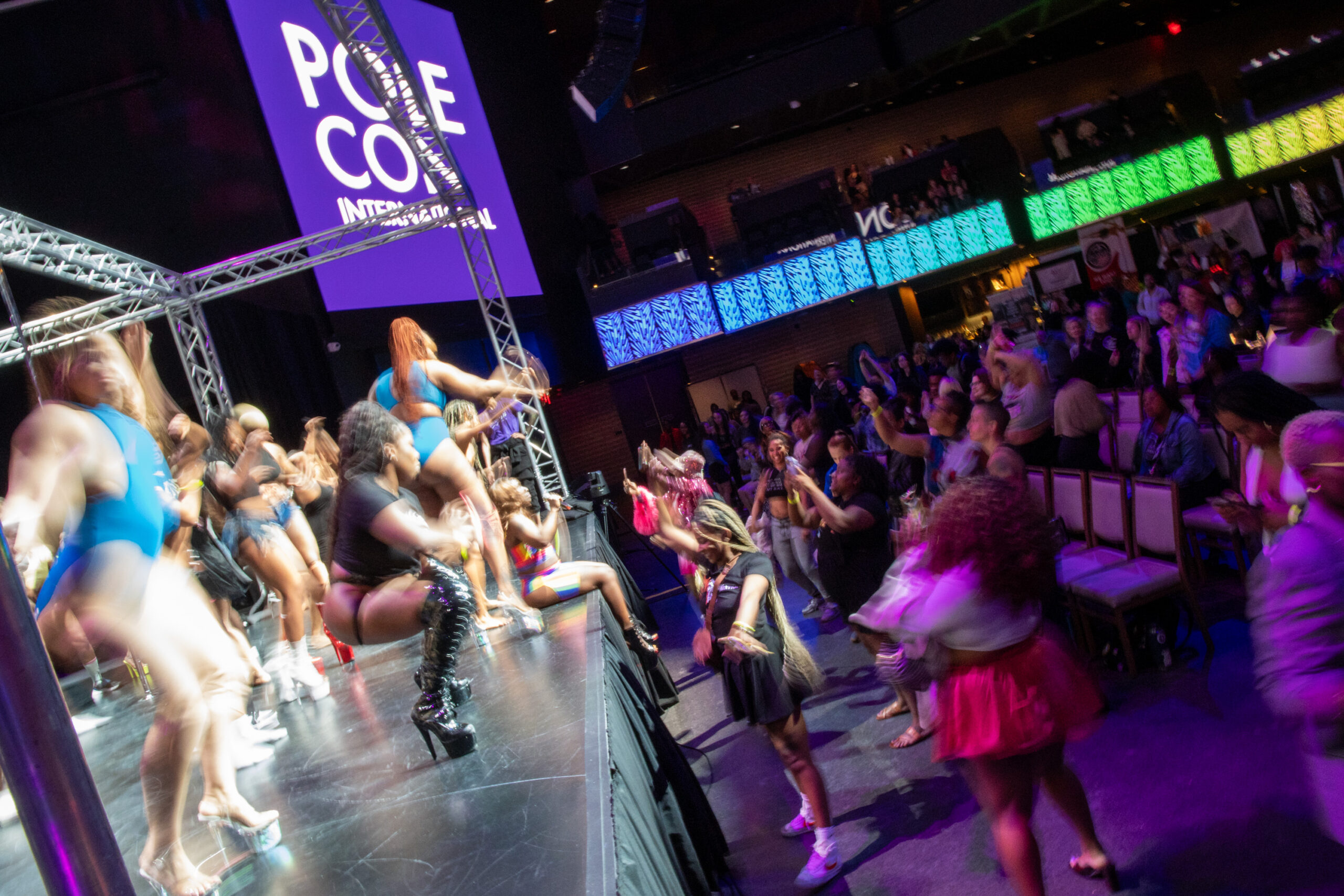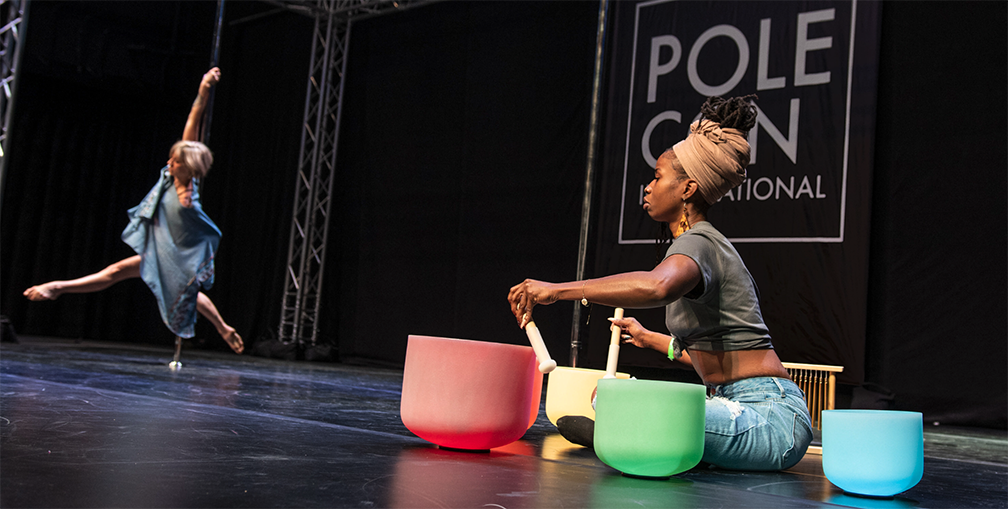Thank you to everyone who took our survey! We read every response. <3 *this is…

How to stay within your window of tolerance as a pole dance student
Pole dancing is hard!
It’s physically hard, it’s mentally hard (and can be super confusing – which leg do I use?!?), and it can be emotionally taxing as well. The key to being successful in your pole dance experience – defined as having fun and meeting whatever goals are valuable to you – is to work within your window of tolerance, slowly expanding it at a pace and in ways that are comfortable to you.
What is your window of tolerance?
“Window of tolerance” is a psychiatric term used to define the space between being too aroused or excited and too relaxed.
Like “Goldilocks,” each of us has a space where we feel engaged but not overwhelmed, a space where we can learn and grow but not push our individual boundaries so much that it causes us to want to (or to actually) shut down and feel uncomfortable participating.
This “window” differs between people and might differ with the same person depending on the activity. It can also differ depending on the day! Think about your own life, some days a bunch of really frustrating things happen but you’re able to keep moving and face those challenges. Other days, something small could “go wrong” and upset your entire day, causing you not to be able to function at work, not enjoy yourself at play, or make you crawl up into a literal ball to shut out the world. In that case, something moved you outside of your window of tolerance.
How does this apply to pole dancing?
Since pole dancing intersects with so many potential challenges to our physical, mental, and emotional well-being, we need to find a structure that works for us to enjoy it.
Some people may love conditioning and just keep working on one trick over and over again, while other people may get discouraged if they don’t have at least one “win” during a class or structured training time. The important thing is to start to recognize when you feel most energized and ready to face challenges and then to structure your training to slowly increase those challenges, expanding your window of tolerance at a pace that feels right to you.
In fitness, increasing the challenge of your workouts over time in a pre-defined way is called periodization. We can look at this in a broader way to include how we feel about pole dancing.
This will look different for the casual poler who doesn’t have an “official” training plan for their hobby. For them, this might mean trying different teachers, studios, or teaching options (like virtual or prerecorded rather than live classes) to be able to work at a pace and in a way that feels comfortable and accessible for them.
What does this look like when it goes wrong in pole dancing?
When you start working outside of your window of tolerance for pole dancing, you might start comparing yourself to others in a negative way. You might stop enjoying something that used to be fun. You might just want to stop doing this activity at all.
If you notice yourself having any of these feelings or just being generally uncomfortable in how you’re poling, where you’re poling, or who you’re poling with, take a minute and reassess what what’s going on and how it’s making you feel.
Maybe a new teacher is more a of a “drill sergeant” personality and that doesn’t work for you. Maybe it’s really popular in your studio to explore more erotic dance styles and that doesn’t work for you. Maybe a hobby that was once a fun outlet, has lost all its joy because you’re being pushed to do more advanced moves than you’re comfortable with right now.
Whatever the particular challenge is, see if you can change it. Can you still enjoy pole if you changed studios, teachers, what you’re working on, or how you’re approaching things? Sometimes a step back can actually be a step forward and you don’t have to lose an activity you enjoyed.
Remember, there is no right or wrong here. There is just what is best for you to help you grow and enjoy pole dancing. For teachers, recognize that sometimes your students might be struggling and to always be kind and offer options which in some cases, might be no longer attending your class. If we can all work within our window of tolerance, slowly increasing exposure to things we feel difficult rather than rushing past it, we will all enjoy pole dancing more!
Latest posts by Colleen (see all)
- PoleCon 2025 Updates from the Survey - June 20, 2025
- PoleCon Hub Page: MORE Black Voices - June 13, 2025
- PoleCon 2025: Recap - June 4, 2025


